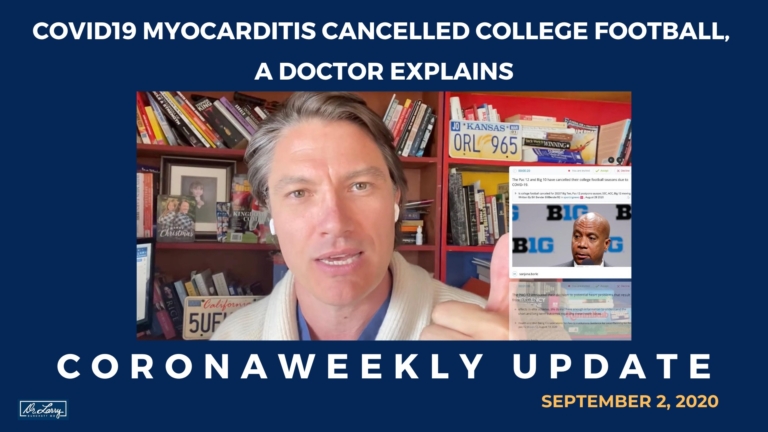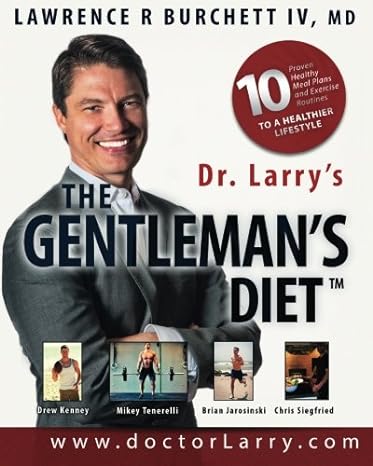COVID-19 Myocarditis Cancelled College Football, A Doctor Explains

[cs_content][cs_section parallax=”false” separator_top_type=”none” separator_top_height=”50px” separator_top_angle_point=”50″ separator_bottom_type=”none” separator_bottom_height=”50px” separator_bottom_angle_point=”50″ style=”margin: 0px;padding: 45px 0px;”][cs_row inner_container=”true” marginless_columns=”false” style=”margin: 0px auto;padding: 0px;”][cs_column fade=”false” fade_animation=”in” fade_animation_offset=”45px” fade_duration=”750″ type=”2/3″ style=”padding: 0px;”][x_author title=”About the Author” author_id=””][x_custom_headline level=”h2″ looks_like=”h3″ accent=”false”]COVID-19 Myocarditis Cancelled College Football, A Doctor Explains[/x_custom_headline][cs_text class=”cs-ta-justify”]Written by Dr. Larry, powered by Averpoint [/cs_text]
This week in COVID-19 for September 1, 2020.
[dropcap]“C[/dropcap]ollege football starts this week, and not without controversy as 2 of the Power 5 conferences have postponed the season–the Pac 12 and Big 10, while the SEC, ACC, Big 12 and Notre Dame move forward to play modified seasons.
Why did they cancel the season? For fears, of COVID-19 related heart problems potentially affecting their players, as you can see in the statement below from the Pac 12.
“We are concerned about health outcomes related to the virus. Among these, there is new and evolving information regarding potential serious cardiac side effects in elite athletes. We do not have enough information to understand the short and long-term outcomes regarding these health issues.”
Here they said 2 things–they are worried about heart problems and 2) they just don’t know. Fair enough, as much remains to be seen regarding the long term consequences of a virus not even a year old.
As a Notre Dame grad, I must admit I was surprised to hear that a university that prides itself putting the interests of the college athlete first (high graduation rate), would be subjecting them to the risk of COVID-19 complications. That interested me to do some research, what do we know, what do we need to know?
What we need–long term data on college athletes regarding COVID-19 and Myocarditis, we don’t have. But we do have cases starting to emerge over the summer, including the following, all 3 whose seasons ended because of developing the heart condition “Myocarditis” from COVID-19. They include Georgia State QB Mikele Colasurdo, Indiana Offensive Lineman Freshman Brady Feeny and Boston Redsox pitcher Eduardo Rodriguez.
HOW MANY COLLEGE ATHLETES DIE EACH YEAR
For this article, I figured a good place to start would be with what is normal, so I dove into an interesting 10 year study examining all 514 deaths from 2003 to 2013 in college athletes. Interesting stuff. We have about 460,000 NCAA athletes. In this study, there were 514 deaths, or about 1 in 8000, which is less than 0.01% or 50 deaths per year.
What did they die of? Half (257 deaths) were from accidents or unintentional injury, like car wrecks, drunk driving, motorcycle crashes, drowning, falls.
But the #2 cause of death was sudden cardiac death, with 79 cases, or about 8 per year. And 9% of SCD were caused by the condition we are talking about–myocarditis.
WHAT IS MYOCARDITIS?
Myo means muscle, cardio means heart and itis means inflammation. So myocarditis is inflammation of the heart muscle, and in the case, is caused by COVID-19 in the same way COVID-19 causes other problems in the body. By directly invading the human cell through the ACE2 protein, and also it’s thought that the body’s own exaggerated immune response, called cytokine storm, results in heart inflammation as well.
So COVID-19 causing heart inflammation this way, and sudden cardiac death being the number 1 non-traumatic cause of death in college athletes–this is why COVID-19 causing heart problems is significant in college athletes. Because they are stressing and exerting their hearts on a daily basis when exercising.
How many people with COVID-19 get myocarditis? We don’t know.
Of those who get myocarditis, what percent fully recover? How many have permanent heart damage or die? We don’t know those numbers either.
THE JAMA MRI STUDY OF COVID-19 HEART COMPLICATIONS
But it does not appear to be insignificant. A July 2020 JAMA study out of Germany looked at 100 hospitalized patients who recovered from Covid, went home from the hospital and then 2 months later, got an MRI of their heart. They found a surprisingly high number with persistent heart findings 2 months later–78%, and 60% had MRI evidence of heart inflammation, or myocarditis.
This study appears to have influenced the decision to suspend college athletics for the time being. It freaked administrators out.
There are many limitations to the study. First, it was in the sickest of patients–those hospitalized. Most athletes are young and healthy, and not many in that age group get Covid that severely. Secondly, we don’t know what MRI heart inflammation means. It might have been just a tiny amount that didn’t affect the function of the heart. Does it mean they are at increased risk of sudden cardiac death with exercise, or is it just nothing?
Some doctors have questioned the significance, calling it an overreaction.
Dr Curt Daniels, director of sports cardiology at Ohio State, suggested 15% of Covid athletes developed myocarditis.
I spend hours looking for published research on COVID-19 myocarditis in young people, specifically athletes. There simply isn’t much published data. In many ways we are flying blind at this point.
RETURN TO PLAY AFTER COVID INFECTION
That said in May, JAMA published a cardiology paper with suggestions on how to handle COVID-19 in athletes, involving a period of sitting out for weeks when positive, then a barrage of cardiology tests (blood work, EKG, heart Echo-cardiogram to assess heart function) prior to returning to activity, and then slowly increasing activity over a period of weeks to return to full competition level. Professional sports appear to have been using similar protocols with their pros sick with COVID-19.
If they have myocarditis, they don’t play, and are following closely to ensure the heart inflammation resolves prior to returning to full play.
This season will be interesting. I would imagine one COVID-19 related death, especially from myocarditis, would shut it down. Alternatively, with close monitoring and followup, hopefully they will be able to care for the athletes appropriately and keep them safe enough to keep playing. Regardless, we will learn a lot as this experimental season is underway.
GO IRISH!
[cs_text][x_gap size=”50px”][/cs_column][cs_column fade=”false” fade_animation=”in” fade_animation_offset=”45px” fade_duration=”750″ type=”1/3″ style=”padding: 0px;”][x_widget_area sidebar=”sidebar-main” ][/cs_column][/cs_row][cs_row inner_container=”true” marginless_columns=”false” style=”margin: 0px auto;padding: 0px;border-style: solid;border-width: 1px;”][cs_column fade=”false” fade_animation=”in” fade_animation_offset=”45px” fade_duration=”750″ type=”1/1″ style=”padding: 0px;”][cs_text]
[/cs_text][/cs_column][/cs_row][/cs_section][cs_section parallax=”false” separator_top_type=”none” separator_top_height=”10px” separator_top_angle_point=”10″ separator_bottom_type=”none” separator_bottom_height=”10px” separator_bottom_angle_point=”10″ style=”margin: 0px;padding: 45px 0px;”][cs_row inner_container=”true” marginless_columns=”false” style=”margin: 0px auto;padding: 0px;”][cs_column fade=”false” fade_animation=”in” fade_animation_offset=”45px” fade_duration=”750″ type=”1/1″ style=”padding: 0px;”][ess_grid alias=”featured_content”][/cs_column][/cs_row][/cs_section][/cs_content]



